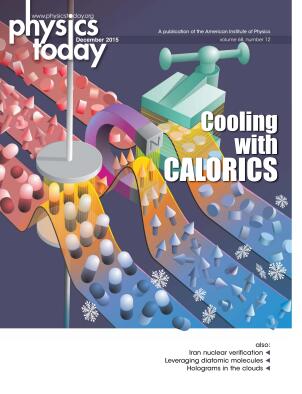A last word on quantum Darwinism
DOI: 10.1063/PT.3.3003
Zurek replies: When quantum objects interact, they can entangle, as does a system with an apparatus or environment in models of measurement or of decoherence. The envariance-based derivation I gave
The so-called problem of outcomes
Ignorance disappears only when an observer correlates with an outcome, precipitating a specific perception. Observers acquire information indirectly, using environments—photons, for example—as communication channels.
Quantum Darwinism recognizes that decoherence doesn’t just hide quantum information. Rather, an environment is a repository and a conduit for multiple copies of information about outcomes, classical pointer states that survive decoherence intact. Flagrantly quantum effects are simultaneously hidden out of the observer’s reach. 1
Classical physics dealt with an objective reality that was believed to exist and evolve independently of information. Measurements had predetermined outcomes. Information was an inconsequential illusion, irrelevant to what happened. In the classical universe, observers were like puppets, their strings pulled by Newtonian dynamics.
Quantum theory shattered that view. Information is no longer a shadow of the classical states of a clockwork universe; it helps define the underlying quantum states. When a state is entangled, the ignorance of outcomes implied by quantum indeterminacy yields the probabilities that are reflected in the mixed state of the system.
This interdependence between what is and what is known means that a quantum state represents partly existence and partly information. In the classical world, one could theorize about the precise state of the system and blame ignorance on observers. When, in our quantum universe, a pure entangled state is known, that fact implies complementary ignorance about parts; information and existence are inextricably intertwined.
The decohered cat is neither dead nor alive. However, it is also no longer a superposition of dead and alive. The information amplified by decoherence and disseminated—for example, by photons—contains multiple records of the fate of the cat. Observers will agree about what happened and will take for granted the objective nature of the past. 2
References
1. M. Zwolak, W. H. Zurek, Sci. Rep. 3, 1729 (2013). https://doi.org/10.1038/srep01729
2. C. J. Riedel, W. H. Zurek, M. Zwolak, arXiv:1312.0331
More about the Authors
Wojciech Zurek. Los Alamos National Laboratory, Los Alamos, New Mexico.
